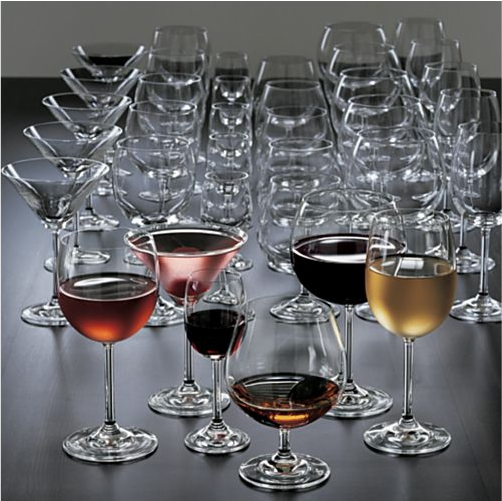If you’ve landed on this website then you no doubt take pleasure in the craftsmanship that has gone into producing your favourite tipple.
Quality, to you, is far more important than quantity. You savour each sip and are as intoxicated by the subtle aromas, hints of flavour and heady tastes as you are by the alcohol in your beverage.
I can easily lose myself in the sensory overload that comes from a well-crafted wine or beer or spirit. In fact it is easy to forget that each sip slightly impairs your physiological ability
It is very difficult to determine how much you can drink in a responsible manner as there are a number of factors that determine your level of inebriation.
As it turns out, responsible drinking is more science than you probably expected. But then again, you’ve taken the time and effort to discover more about your VO brandy, the malt in your IPA, the terroir of your wine or the botanicals of your gin, so why not find out more about HOW MUCH you can drink.
Inebriation vs Blood Alcohol Content
At this point it is worth noting that there is a difference between inebriation or drunkenness and Blood Alcohol Content.
Inebriation is a non-scientific description of a person whose personality and physical ability has been changed by alcohol. They may be mildly drunk or ‘blind’ drunk. It is difficult to determine simply by watching their behaviour at what point they become an endangerment to others.
Blood Alcohol Content is the scientific determination of the amount of alcohol that is found in a person’s bloodstream and is used to determine when a person legally becomes an endangerment to others.
The only time when somebody can be determined to be legally endangering others from excessive alcohol consumption is when they drive a motor vehicle on a public road or skipper a waterborne vessel or fly an aircraft or operate certain heavy machinery.
Assuming that after your delightful evening at a wine tasting or exploring a single malt whisky with a fellow enthusiast, you are only going to be driving a car, you need to know at what point you must stop drinking or when you need to employ the services of a driver.
If you are responsible for the careful storage of your wine then you should be equally responsible for your drinking of the wine.
Illegal Blood Alcohol Content
The government in South Africa, through Section 65 of the National Road Traffic Act 93 of 1996, has stated that any person whose Blood Alcohol Content is 0,05 gram per 100 millilitres or more may not drive. The concentration of alcohol in any specimen of breath exhaled must be less than 0,24 milligrams per 1 000 millilitres, .
So how do you keep your Blood Alcohol Content below 0,05 grams per 100 millilitres?
A Unit of Alcohol
A Unit of Alcohol is the rule of thumb measurement for 0,05 grams of alcohol per 100 millilitres. It translates into 10ml of pure alcohol consumed by a person who weighs 68 kilograms in one hour.
Commonly consumed alcoholic drinks, VERY ROUGHLY, convert into Units of Alcohol as follows:
- 75 ml glass of wine = 1 unit
- 250 ml glass of wine = 3.3 units
- 375 ml of beer = 1.5 units
- 375 ml of cider = 2 units
- shot/shooter = ½ unit in most instances
- 25 ml tot of spirits = 1 unit
- 375 ml of spirit cooler = about 1.25 units
- A cocktail = between 2 and 4 units
The alcohol content of wine, beers, coolers, spirits etc varies from brand to brand and from producer to producer so the above calculation is very much an estimate.
How quickly is alcohol broken down by your body?
A healthy liver can process roughly one Unit of Alcohol per hour. There are other factors that need to be considered too.
The more you weigh and the bigger you are, the more alcohol it will take to reach the critical Blood Alcohol Content. Keep in mind that alcohol does not enter fat so if your weight is made up of a lot of blubber then this is not helping to reduce your Blood Alcohol Content.
Men tend to have more water in their bodies and therefore a higher alcohol tolerance. Men also have more of the enzyme that breaks down alcohol in their stomach.
Eating before drinking prevents the alcohol from moving to the small intestine too quickly and thus entering your blood stream as fast an empty stomach.
Summary of the factors that determine your level of Blood Alcohol Content
- The amount of alcohol you consume. The higher the level of alcohol in the beverage, the higher your Blood Alcohol Content.
- The rate at which you consume this alcohol. The faster you consume, the faster your Blood Alcohol Content increases.
- Your gender. A Unit of Alcohol has a greater effect on woman than on men.
- Your body mass and muscle mass. The more muscle mass you posses the lower the effect of a Unit of Alcohol.
- A good meal reduces the rate at which alcohol enters your blood stream.
Responsible drinking – enjoy your drink, love your neighbour
The great advantage of being a wine, beer or spirit connoisseur is that you will probably drink slowly and appreciatively. Now that you know how much you can drink without endangering someone on the road, make it your policy to drink within the legal limits and advise others too.
If you feel you’ve exceeded the legal limit then don’t drive. That perfectly crafted beverage that brought you such pleasure is not worth a night in jail or the loss of your driving license or a hefty fine or, worst of all, a man slaughter conviction.
It may be that you may never derive pleasure from your favourite tipple again. Drink responsibly.



